In this lesson, we will carry out an interesting experiment on how to read the data of Soil Moisture Sensor module.
43.1 Components to be prepared
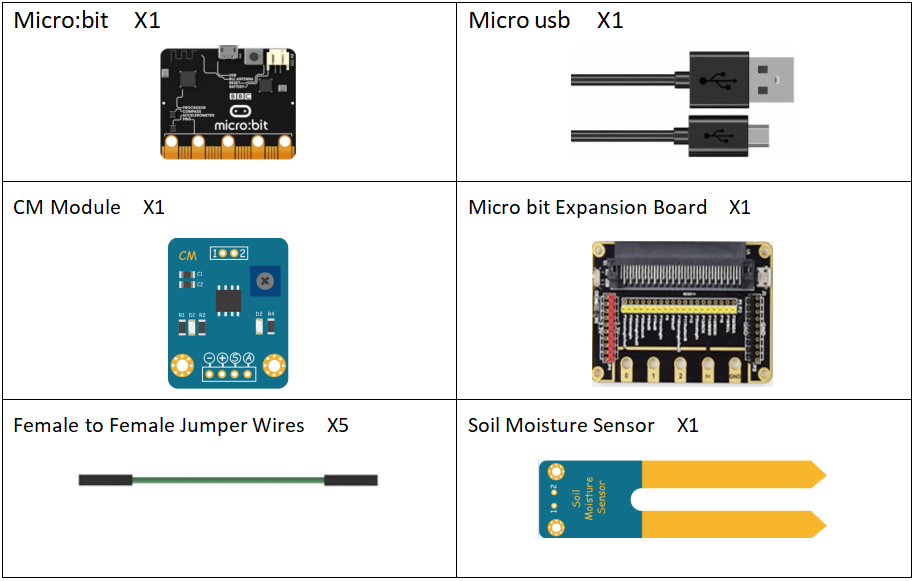
43.2 CM and Soil Moisture Sensor module
43.2.1 CM and Soil Moisture Sensor module
The Soil Moisture Sensor module is a simple sensor that measures the soil moisture. When the soil moisture is insufficient, the output value of the sensor will decrease; on the other hand, the value will increase when there’s enough water. The surface of the sensor is gilded to prolong its life.
The CM Module consists of a comparator LM393 and extremely simple external circuits. When using the module, you can set a threshold via the blue potentiometer beforehand. When the input analog value reaches the threshold, the digital pin S will output a Low level.
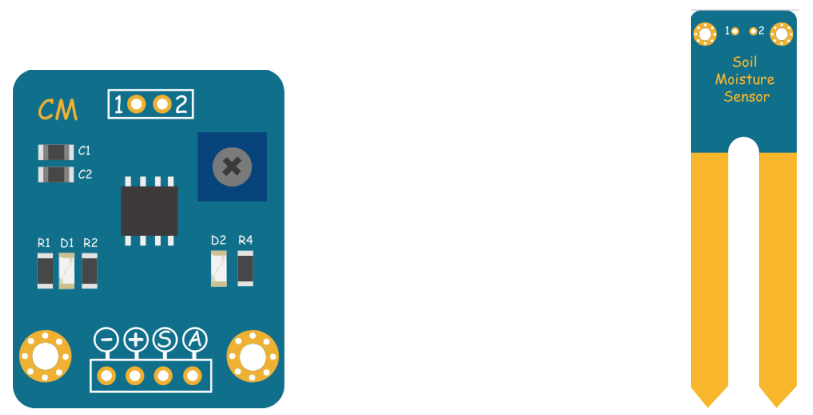
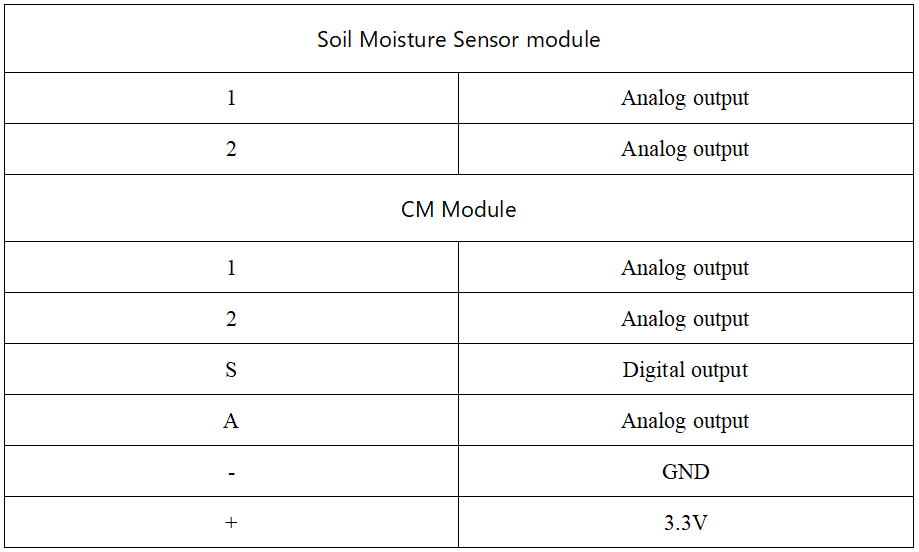
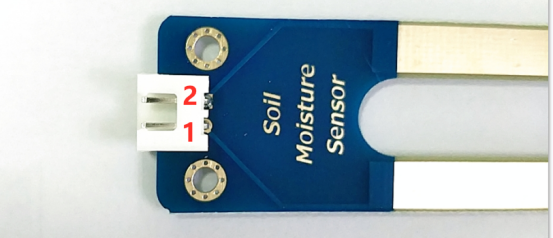
43.3 Low level and high level
In circuit, the form of binary (0 and 1) is presented as low level and high level.
Low level is generally equal to ground voltage (0V). High level is generally equal to the operating voltage of components.
The low level of Micro:bit is 0V and high level is 3.3V, as shown below. When IO port on Micro:bit outputs high level, low-power components can be directly driven,like LED.
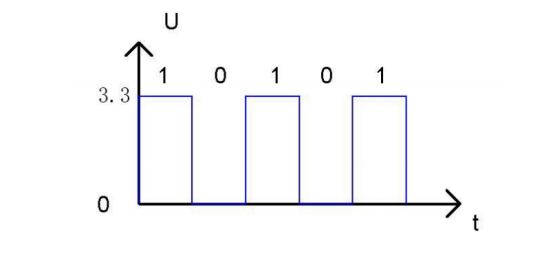
43.4 Circuit
You should connect the components according to the following circuit diagram, and view the pictures with the function “Zoom in”:
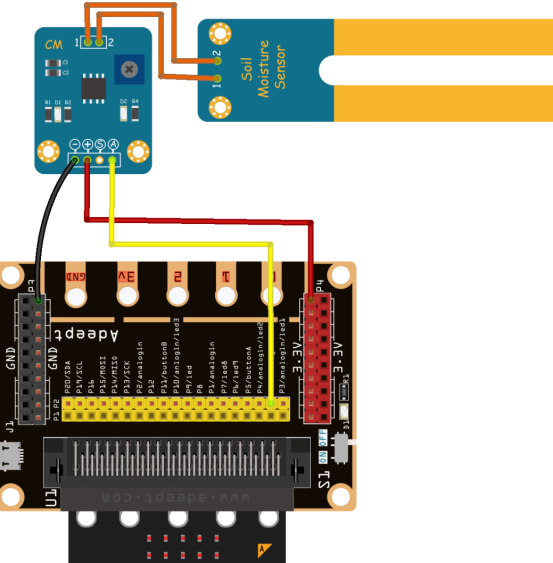
43.5 MakeCode programming
In the following part, we will make use of the online MakeCode editor to complete the experiment in this lesson.
43.5.1 Start programming
(1) Log in to the website
1. You need to enter the URL in the address bar of Google Browser:
https://makecode.microbit.org/
2. After the website is successfully opened, the interface as shown below will appear:
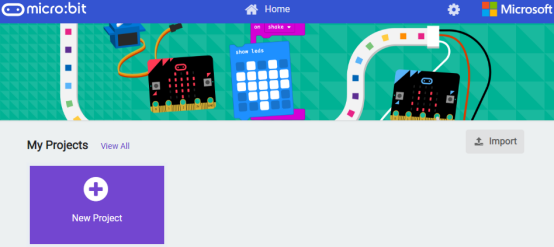
(2) Import a project
1. In the HOME interface, click the "Import" button to import the external ".hex" file:
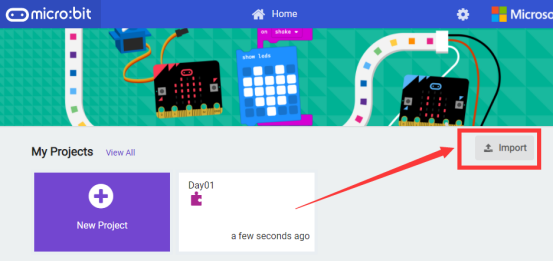
In the pop-up dialog box, select the "Import File", as shown in the following figure:
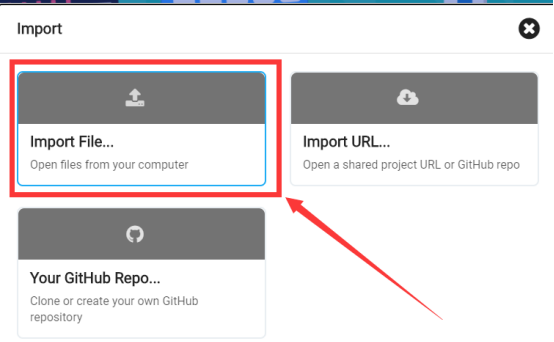
Click the "Choose File"
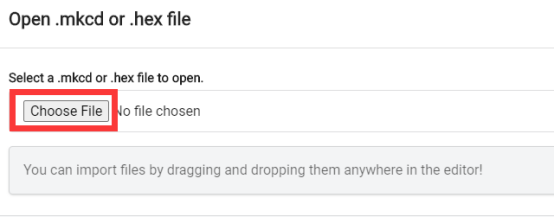
Find the code file for this lesson:
BBC_Microbit_Sensor\Code\Lesson_43\BlockCode
Select the file in ".hex" format and click the Open:
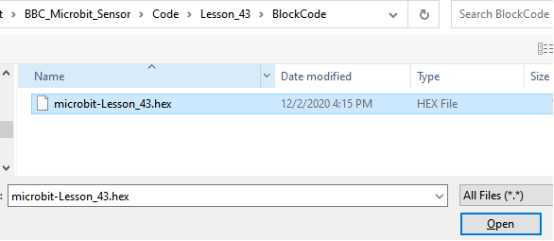
2. Notice whether the file has been loaded into the following window, and then click the "Go ahead!" button, as shown in the following figure:
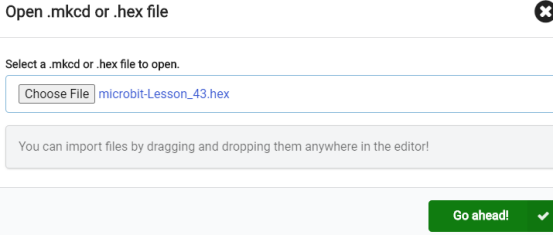
3.You can see the following interface when successfully opening the file:
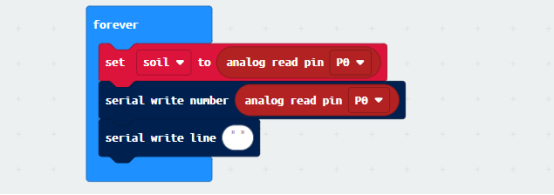
43.5.2 Run the program
1. After the program is written, connect micro:bit and PC with a Micro USB cable.
2. After micro:bit is connected to the computer, you need to first "Pair device". Click the  button on the right of
button on the right of  in the lower left corner, and then click the
in the lower left corner, and then click the  option, as shown in the following figure:
option, as shown in the following figure:

Then click  in the lower right corner
in the lower right corner
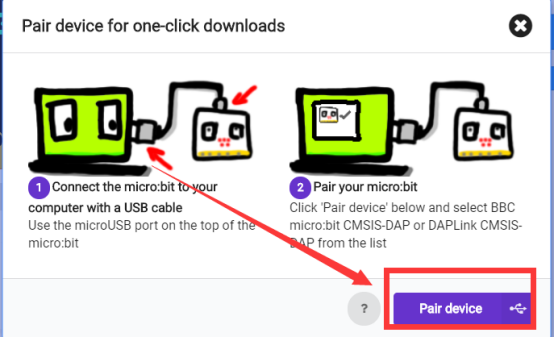
Then the following dialog box will pop up, select  , and then click
, and then click 
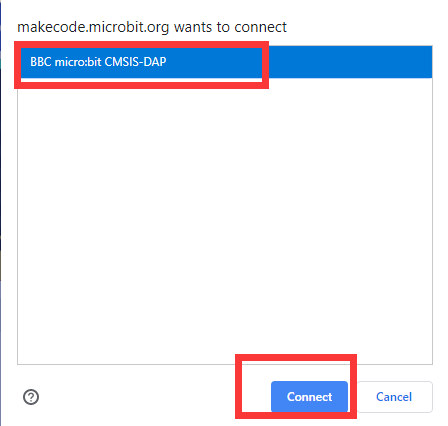
After the device is successfully paired, the  button changes to
button changes to 

3. Start to download the program to the Micro:bit, click the button  , and the program will be downloaded directly to the Micro:bit. Then wait for the download completion. When the download is successful, your Micro:bit will restart and run the program you have downloaded before.
, and the program will be downloaded directly to the Micro:bit. Then wait for the download completion. When the download is successful, your Micro:bit will restart and run the program you have downloaded before.
4.Then click the button【Show Console Device】on the left, as shown below:
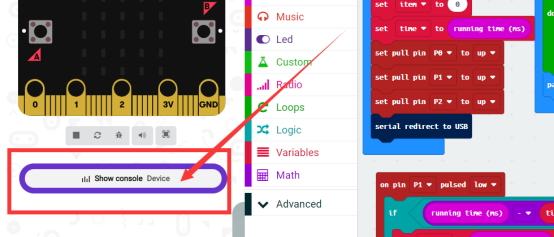
5.Then you will see the waveform below. Place Soil Moisture Sensor module into the soil slowly and observe the changes in the waveform.
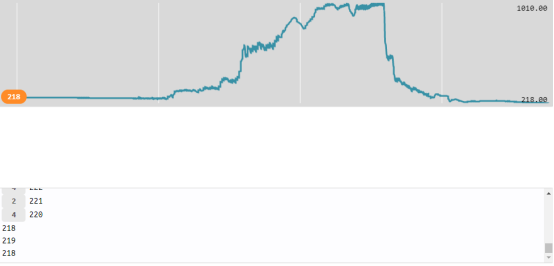
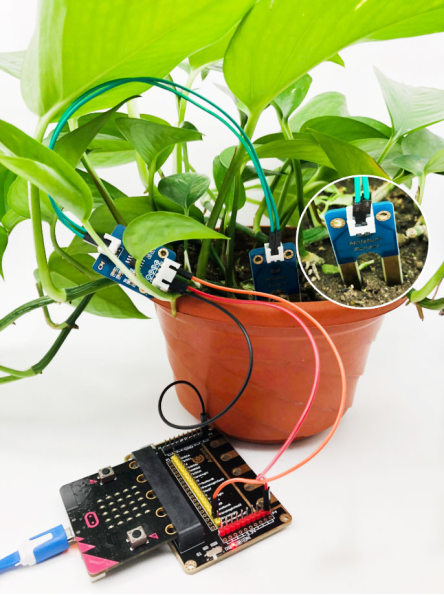
[Note]
1.If no experimental phenomenon has been detected after clicking the button  , you need to click the
, you need to click the  button on the right of the
button on the right of the  , and then click the
, and then click the  , as shown in the following figure:
, as shown in the following figure:

2. If no experimental phenomenon is observed, you should check whether the USB cable of Micro:bit is successfully connected. If not, please download the program again.
If you have problems, please send us an email: support@adeept.com
43.5.3 Learn the code program
The following instruction blocks will be applied in the program. Please see the description of the function as follows:

43.6 Python programming
43.6.1 Run the program
1.Connect micro:bit and PC with a Micro USB cable.
2. Open the Mu Editor installed on the computer, and click the button [Load] in the upper left corner to open the source code program of this lesson:

Find the code file for this lesson:
BBC_Microbit_Sensor\Code\Lesson_43\PythonCode
Select the file in ".py" format and click the Open:
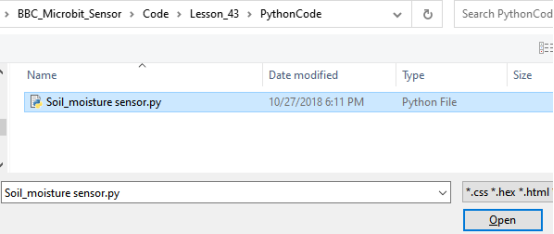
3.Click the button 【Flash】to download the program to Micro:bit. Click the button  immediately, and the output data can be read on the console, as shown below:
immediately, and the output data can be read on the console, as shown below:
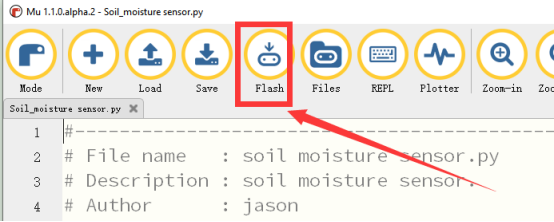
4.Please place Soil Moisture Sensor module into the soil slowly, and there will be some changes of the data output on the console, as shown below:

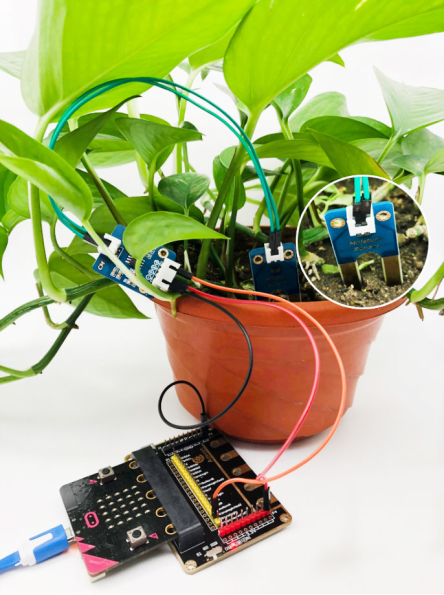
【Note】
1. If no data can be read on the console,click button【Flash】for a second time, and click the button  immediately. If no data have been output yet, please repeat the above steps or check whether the wiring is connected correctly.
immediately. If no data have been output yet, please repeat the above steps or check whether the wiring is connected correctly.
If you have problems, please send us an email: support@adeept.com
43.6.2 Learn the code program
The following is an explanation of the course code of this section.
(1)Read the data of Soil Moisture Sensor module and print out the data.
11 12 13 14 15 | while True: # define soil moisture sensor pin soil = pin0.read_analog() print(soil) sleep(1000) |